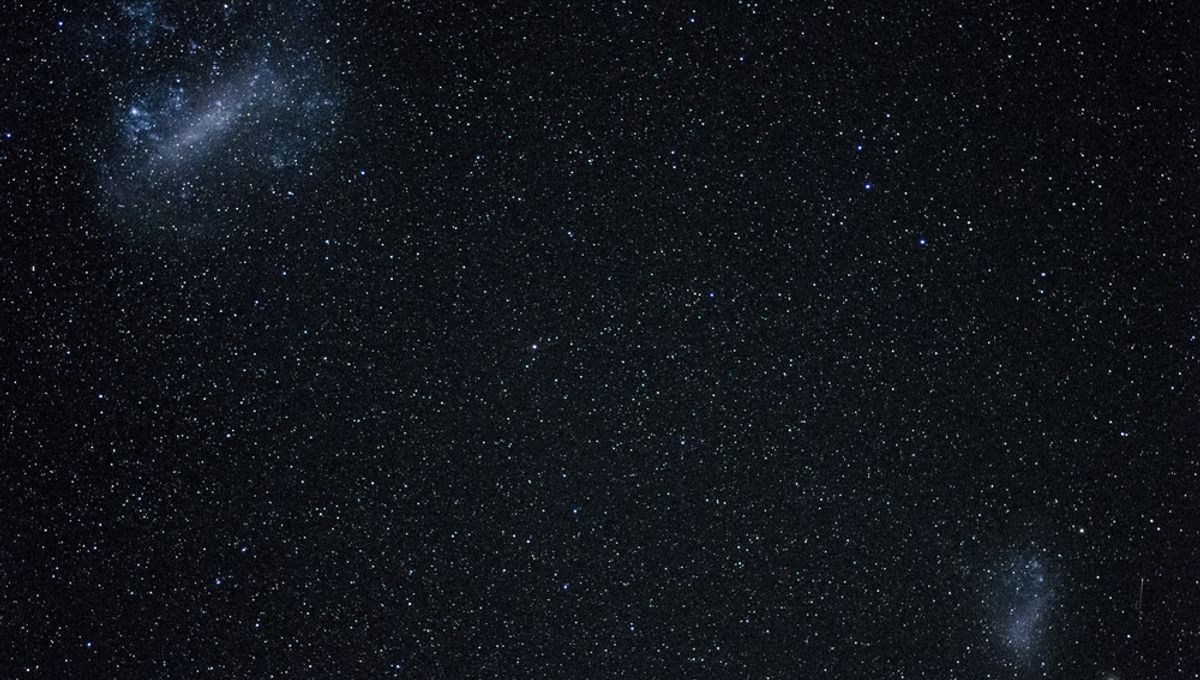
The Milky Way Galaxy may be our precious home, but it can be a bully to smaller collections of stars. The dwarf galaxies it doesn’t consume tend to be ripped apart by the gravitational force of a much larger object. Consequently, the survival of two of our nearest galactic neighbors, the Large and Small Magellanic Clouds, has puzzled astronomers, but now they think they have the answer. The larger of the pair maintains a cocoon of gas that shields not only itself but its smaller counterpart.
A paper in Nature reveals the corona of hot gas that surrounds the two dwarf galaxies, preventing the Milky Way from stealing their raw material.
Streams of gas were detected decades ago trailing behind the Magellanic Clouds from recent (by astronomers’ standards) encounters with their much larger neighbor.
“A lot of people were struggling to explain how these streams of material could be there,” said Dr Dhanesh Krishnarao of Colorado College in a statement. “If this gas was removed from these galaxies, how are they still forming stars?”
The answer was revealed by combining observations made with the Hubble space telescope and the former Far UItraviolet Spectroscopic Explorer (FUSE) satellite, and has implications for other galaxies as well.
“Galaxies envelope themselves in gaseous cocoons, which act as defensive shields against other galaxies,” Dr Andrew Fox of the Space Telescope Science Institute said.
The find is a vindication of previous modeling, which indicated that a corona at temperatures above 100,000 degrees Kelvin and a radius of 400,000 light years could account for the combination of extracted gas and the clouds’ stability. Galaxies form out of primordial gas clouds, and the larger ones can retain some of this as coronas. Although classified as a dwarf galaxy, the Large Magellanic Cloud (LMC) was considered a good prospect to have maintained one. The LMC’s corona is expansive enough to shield the smaller cloud as well, like an older child who squabbles with their younger sibling, but protects them all the same.
Studying the Milky Way’s corona from the inside is difficult, and most other galaxies are too far away to see something this faint, so the LMC’s provides a unique opportunity. Nevertheless, it wasn’t easy to find. “The corona gas is so diffuse, it’s barely even there,” Krishnarao said. It also has to be distinguished from material escaping the clouds themselves or the Milky Way.
To know what to look for, the authors went to the other extreme, searching for the effects of coronas on distant galaxies that contain quasars. Although these coronas are vastly too far away to see directly with existing equipment, they shroud the quasar, and the distinctive dimming they produce gave us clues about coronal composition. Matching material was found surrounding the LMC.
Rather than being a primordial mixture of hydrogen and helium from the Big Bang, the team found ionized carbon, oxygen, and silicon in the LMC’s corona. They also determined the density, always low, decreases the further one goes from the LMC.
Yet tenuous as it is, the corona is the reason galaxies can be seen from dark sky sites in the Southern Hemisphere with the naked eye. “Anything that tries to pass into the galaxy has to pass through this material first, so it can absorb some of that impact,” Krishnarao said. Each encounter with the Milky Way or another object wears away part of the corona, but prevents worse damage to gasses within the small galaxies.
More of the corona’s secrets may be revealed by observing its dispersive effect on fast radio bursts, if we can find any coming from distant galaxies in the same direction.
The shield won’t last forever. It is thought both galaxies are on an infalling orbit into the Milky Way, and will eventually be captured. In the meantime, however, they are forming stars at a great rate, providing us with rich scientific opportunities, and the only supernova visible to the naked eye in 400 years.
The paper is published in Nature.
Source Link: Hubble Finds The Shield That Has Saved Nearby Galaxies From Dissolving